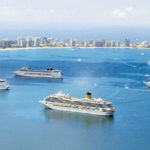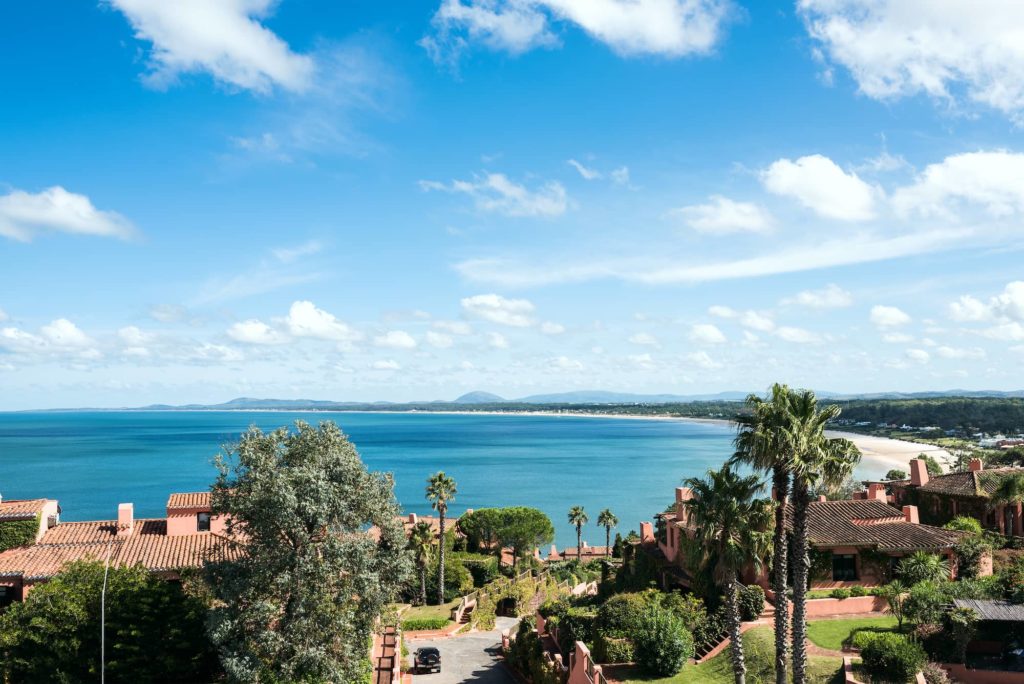Permanent Transformation at the Port of Montevideo
The port has always been a hallmark of Montevideo. From the very origins of this city and its location, this has been the key for entry and exit of products in this strategic region of the world.
But since the legal reform in the 90´s the port of Montevideo has evolved, constantly growing and enlarging the volume of activity, increasing the number of jobs and its role as a distribution center for the region.
All types of vessels, from warships to fishing, to containerships, cruise ships and Buquebus ferries operate in the port of Montevideo.
The port has multipurpose characteristics; therefore the docks have been used for different purposes according to scheduled operations. That operation is ordered based on a regulation that gives higher or lower priority to a commercial operation in particular. This is because the resources are scarce, since more docks are needed. Cruises were arriving at Area A together with the containers area.
AREA C for Cruise Ships
If you happen to stop at the Port of Montevideo, you will notice several changes that have been taking place during early 2014. The upcoming opening of the Area C in the Port of Montevideo will allow the arrival of even larger ships for cruises and for logistics.
The cruise industry has been changing. The ships are coming increasingly larger and that’s a trend that is going to stay and the Port of Montevideo needs to adapt to this new scenario.
The cruise industry has grown steadily and it is a consolidated product in Uruguay which has grown very substantially in the last 9 years. In 2005 the country would receive 74 cruisers, 12 in Punta del Este and 62 in Montevideo. The prediction for 2014 is that there will be a total of 420,000 tourists distributed in equal amounts between Montevideo and Punta del Este.

The dock C transformation is not merely for cruise activities but it will also decongest the operation of loading and unloading containers. This will be a big change and provide greater opportunities even for the arrival of larger size ships.
Not only will the facilities improve for the tourists but there will be catering services and a variety of inputs such as fuel, fruit and vegetables, mineral water and flowers for the cruise ships.
“Project Port”
On the other hand, last February the Project Port of Montevideo was presented by the Customs officials to improve the logistics for the port.
80% of the containerized cargo that passes through the metropolitan Paraguay airport will be brought down the waterway to the Port of Montevideo.
With the Project Port of Montevideo, Customs will seek to diagnose the current situation of the flow of goods at the port of Montevideo, identifying the processes of customs operations feasible improvements and redesigning based on international best practices in similar ports in order to implement changes at a later stage.
The initiative has the financial support of the Development Bank of Latin America with the cooperation of the Valencia Port Foundation that will provide Spanish port experts to implement the Project Port of Montevideo. That’s a big challenge and the port of Montevideo has accompanied this task, it is possible thanks to the private operators that have committed to invest in technology and expertise to download this type of equipment in our port.
The port of Montevideo movement went from 400,000 containers in 2008 to 459,000 in 2013, measured in TEUs (20-foot equivalent unit).
Free Port
With the Ports Act of the year 92 the Free Port region was established.
The free port allows the entry of goods, keeps them there without paying import nor export taxes. These goods are controlled by Customs but do not pay, but the goods can make added value. You can split, consolidate, deconsolidate, you can tag, highlight, you can make logistical activities associated with the goods. All goods entering into free port looses its origin and enters the Mercosur region and can be re-exported to countries in the region. This makes an important difference keeping this profile, because it pays duties as if it had always been in the country.
For more information on specific areas or Real Estate in Montevideo, Uruguay please contact us.
Mary Ann Thompson

